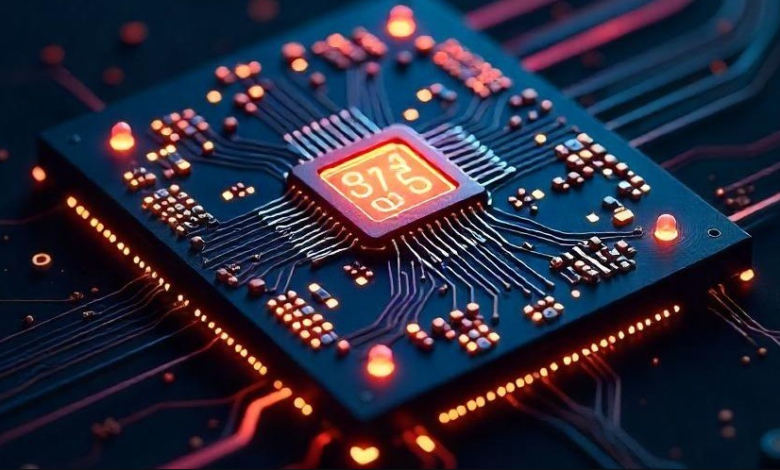Neuromorphic Computing and PCBs: The Future of AI Hardware

Artificial intelligence is undergoing a revolution because of neuromorphic computing, which imitates the neural architecture of the brain to provide processing that is quicker, more effective, and more adaptive. Advanced PCB engineering is at the heart of this invention because it makes it possible to integrate intricate neuromorphic devices with ease. The need for PCB boards, complex layouts, and semiconductor engineering to support the requirements of brain-inspired systems is growing as this technology advances. The design and implementation of next-generation AI hardware across a variety of applications are being redefined by this revolutionary change.
PCB Engineering Redefined for Neuromorphic Structures
Electronic hardware construction has always relied on traditional PCB architecture, but neuromorphic systems require a degree of integration and complexity that deviates from accepted design guidelines. Instead of being built around sequential logic processes, neuromorphic chips operate asynchronously, sending signals in a spike-based manner, much like neurons do in the human brain. PCB routing, signal timing, and power distribution are all subject to additional restrictions as a result of this communication model.
The distinct signaling behavior of neuromorphic processors must be understood by engineers working in the field as they approach the PCB board layout. The circuits must minimize latency and interference while supporting low-power, high-bandwidth interconnects. More than digital bus systems, the distribution of connections reflects biological networks, which calls for innovation via placement,and trace routing.
In order to connect thousands, if not millions, of spiking neurons and synapses, multi-layered PCB structures are frequently needed. Especially when neuromorphic systems connect with conventional computing hardware or sensors, these layers must be built to separate noise-sensitive analog components from high-speed digital sections. To achieve the electrical performance needed by these creative designs, high-fidelity materials, and cutting-edge substrate technologies are essential.
Semiconductor Engineering’s Function in Brain-Inspired Systems
Neuromorphic computing’s hardware innovation is deeply rooted in semiconductor engineering. Even though they are strong, traditional silicon-based architectures struggle with speed and energy efficiency when used for AI tasks. By utilizing event-driven designs and doing away with clock-based processing, neuromorphic devices, on the other hand, are designed to function with significantly reduced energy usage.
This change is mostly dependent on emerging semiconductor technology. For instance, memristors are parts that, like synapses in the brain, may store data and carry out computations at the same time. Integrating such elements into PCB boards necessitates a completely new approach to circuit layout and thermal management because of their non-volatility and analog nature, which make them perfect for neuromorphic applications.
Higher component densities have also been made possible by three-dimensional semiconductor packaging techniques, which have decreased the physical distance between memory components and processing units. Faster data transfer rates and better signal integrity are made possible by this close proximity, but managing heat dissipation and preserving operational stability become more difficult due to the increased thermal problems.
PCB designs must take into consideration hybrid architectures, where data is actively altered inside the same physical space as it is stored and retrieved, as the distinction between memory and processing becomes increasingly hazy. Computation must be embedded throughout such designs, combining analog and digital elements in a smooth, well-coordinated arrangement.
See also: How to Use Aromatherapy with Massage for Relaxation: 5 Powerful Techniques for Stress Relief
PCB Board Design for Cognitive AI Systems
PCB boards for neuromorphic computing must behave as more than just carriers of chips and interconnects at the system level; they must actively participate in the hardware’s cognitive capabilities. A variety of peripheral components, including signal converters, brain processing units, sensory inputs, and real-time feedback controllers, are frequently included in these boards. To keep the system responsive and efficient as a whole, all of its parts must work together harmoniously.
Modularity and scalability are frequently given top priority in PCB designs for neuromorphic devices. Applications range from data-intensive research platforms to low-power edge devices, therefore a modular architecture enables task-specific customization of the number of neurons, memory cells, and communication channels. Only sophisticated design techniques that provide modular interconnects, plug-and-play capabilities and programmable circuit routes make this adaptability possible.
Neuromorphic systems frequently function in settings like biomedical implants, wearable technology, and robots where conventional cooling systems are problematic or when physical space is severely limited. Thermally sensitive PCB layouts are essential for these kinds of applications. Conduction pathways, thermally conductive substrates, and creative material layers are necessary to control heat and make sure that form factor compactness does not impair performance.
Connecting Artificial Systems and Biological Intelligence
The physical media that make this convergence possible are PCB boards, and neuromorphic computing lies at the nexus of biology and technology. Neuromorphic devices use spiking neural networks to simulate the complex functions of the nervous system. These networks need exact control over feedback loops, signal timing, and noise reduction.
Particularly in applications involving pattern recognition, sensory data fusion, or autonomous decision-making, signal synchronization over thousands of channels is essential. Timing-accurate signal routes, reduced electromagnetic interference, and dynamic reconfiguration of the interconnects are all requirements of PCB engineering. To achieve ultra-fast, energy-efficient communication on neuromorphic boards, optical signaling, and photonic integration are being investigated as potential next stages.
The Developing Field of AI Hardware Development
In neuromorphic system development, hardware co-design—a process where software, chip architecture, and PCB board layout are produced simultaneously—is becoming the norm. This cooperative strategy guarantees that the system’s physical and functional layers develop simultaneously, reducing integration bottlenecks and maximizing end-to-end performance.
Neuromorphic PCBs are opening up new possibilities in a variety of industries, from intelligent cameras with on-device learning capabilities to neural prostheses that restore sensory awareness. These developments are based on the effective combination of cutting-edge engineering and biology-inspired computer models, which is made feasible by extensive expertise in semiconductor integration and PCB engineering.
Conclusion
With neuromorphic computing, intelligence is integrated into the basic architecture of electronic systems rather than being limited to software algorithms, marking a daring new frontier in AI technology. The ability to convert the complexities of the brain into electrical circuits and tangible devices is essential to the future of cognitive computing.
Building smarter machines is just one part of the journey ahead; another is rethinking the underlying hardware that enables them. With PCB engineering at its heart, neuromorphic computing is set to transform the future of artificial intelligence through ongoing advancements in board architecture, material science, and system integration.





